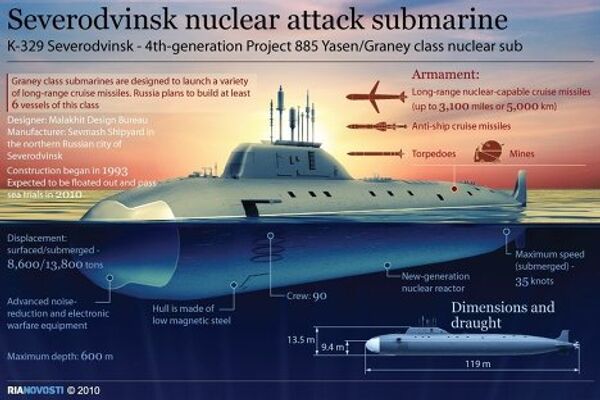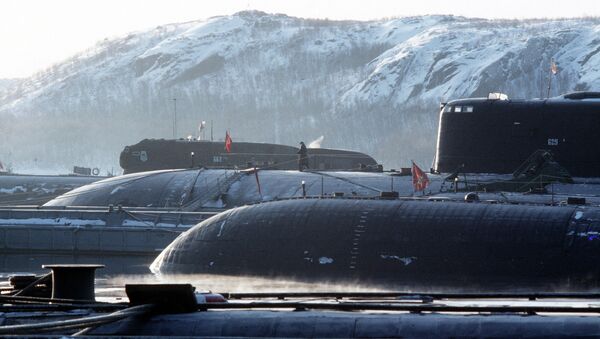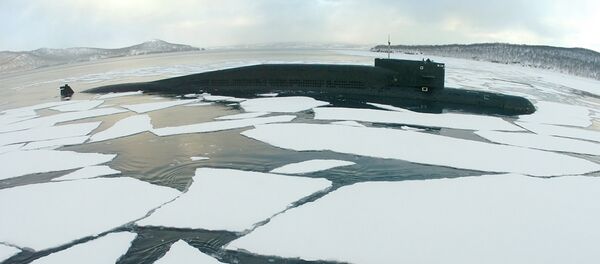According to the article, the best example is Project 885 Yasen-class nuclear attack submarine the K-329 Severodvinsk. Its construction started in 1993, and it entered service in 2014.
Despite the fact that the vessel had been repeatedly delayed due to financial problems and many of its components were rendered obsolete, the Severodvinsk is "the most capable submarine in the Russian fleet."
"We’ll be facing tough potential opponents. One only has to look at the Severodvinsk, Russia’s version of a SSGN [nuclear guided missile submarine]. I am so impressed with this ship that I had Carderock build a model from unclassified data," the article cited US Rear Admiral Dave Johnson, Naval Sea Systems Command’s program executive officer.
The Severodvinsk boasts many of the automation technologies the USSR developed during the 1970s and 1980s with the Project 705 Lira-class boats, known by their NATO-code name as the Alfa-class.
According to some reports, the vessel might reach a maximum speed of 35-40 knots. It is much quitter that previous Russian submarines and has a maximum silent speed of 20 knots.
According to Russian media reports, the Severodvinsk is much lighter than other Soviet submarine designs. It has hybrid design, with a lighter structure over the pressure hull.

Another unique feature of the vessel is a spherical bow sonar called the Irtysh-Amfora.
The Severodvinsk has eight torpedo tubes, four of which are 650 mm tubes and the rest are 533 mm. Combat Fleets of the World estimates that the Yasen-class may carry 30 torpedoes.
The Kazan is expected to be equipped with improved sensors and weapons systems compared to the Severodvinsk. It is also quieter than the Severodvinsk, according to the article.
The Russian Navy plans to procure at least eight Yasen-class attack vessels. Four boats have already been ordered, with a third vessel, the Novosibirsk, having been laid down in 2013.




